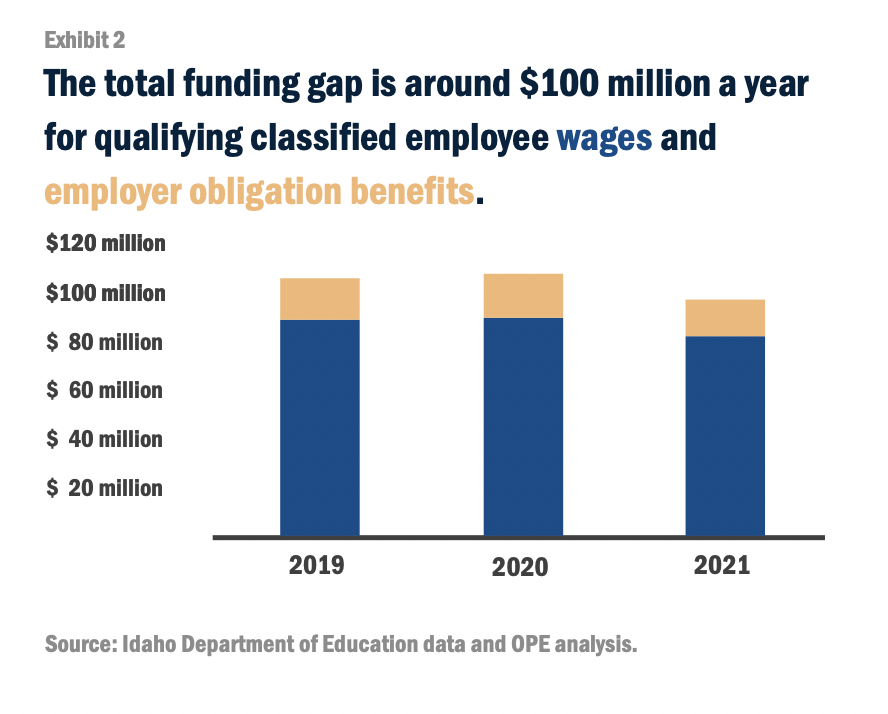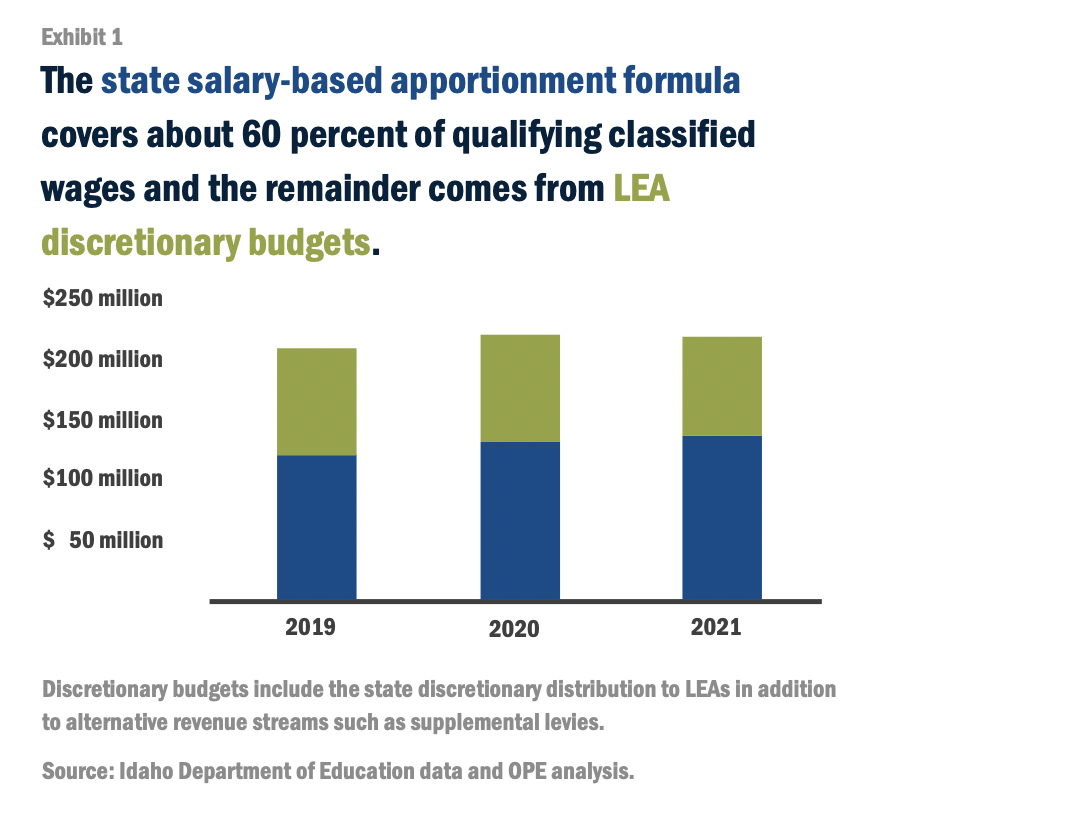School districts and charters are paying $97.4 million per year on classified employee wages and benefits to make up for a gap in state funding, according to a report released by the Office of Performance Evaluations (OPE) Thursday.
Local education agencies (LEAs) pay the nearly $100 million out of discretionary funds or other funding sources like supplemental levies, “potentially taking away money that could be spent elsewhere,” the report states.
The report includes policies for the Legislature to consider to help fill the gap, including changing the funding formula and looking to nearby states’ solutions.
The Office of Performance Evaluations is a nonpartisan office of the Legislature dedicated to evaluating state programs and policies for cost-efficiency. Ideas are submitted by legislators to the Joint Legislative Oversight Committee, and if chosen, assigned to the OPE. Classified staff funding was one of three topics chosen for evaluation in March 2022.
State funding for classified staff — non-certified K-12 employees like bus drivers, IT specialists and lunch servers — comes through the salary-based apportionment formula in Idaho Code. The formula funds 0.375 full-time equivalent classified employees per classroom.
In 2021, local education agencies (LEAs) received $22,761 for every qualifying classified employee, totaling $138.1 million for classified staff wages across the state.
But the state support sits well below what districts need to cover the real costs of classified wages and benefits, the OPE evaluation found. Last year, LEAs paid an additional $81.4 million for classified wages and another $16 million for benefits that weren’t covered by the funding formula.
The state funding gap is larger for classified staff than for teachers or administrators.


And districts hire more classified employees than the formula accounts for, according to the report.
Despite an increase in need for IT specialists and paraprofessionals over the last 28 years and heightened workloads for administrative support staff, the 0.375-per-support unit allocation hasn’t changed since 1994.
But even with additional LEA funds, Idaho’s classified staff wages still don’t measure up to surrounding states’. Classified employees living near the Washington border receive around $12,000 less than their Washington counterparts, according to the report. Classified wages are also lower, on average, than similar public sector jobs in Idaho.
“This disparity can present a challenge in attracting and retaining qualified staff,” the report states.
The report includes policies for the Legislature to consider to fill the gap in state funding. If legislators decide to take on the task, the report states, they can increase the amount paid per employee and alter the formula.
They can also turn to Washington or Wyoming, states that have similar funding models, for solutions.
